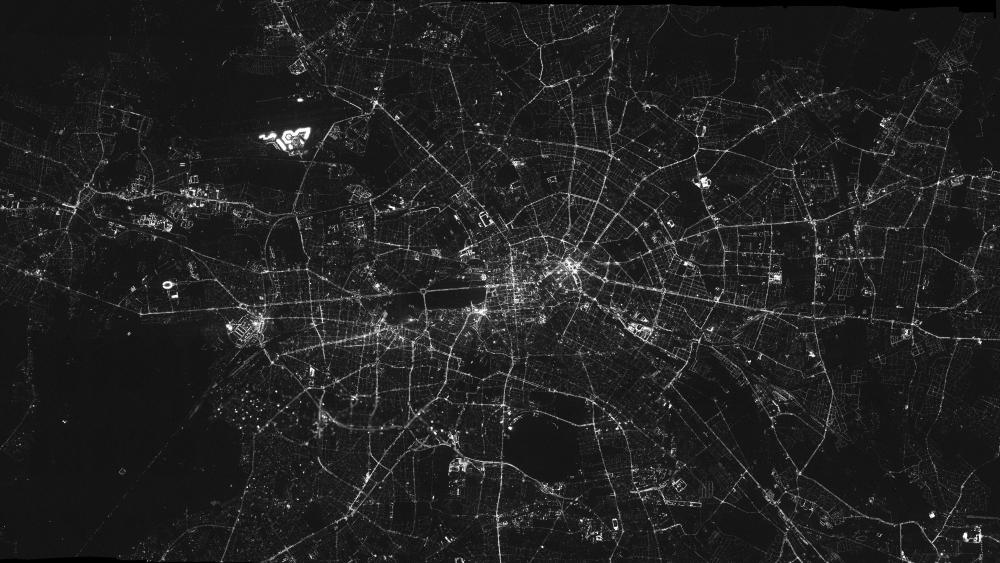
Image of Berlin at night | Photo: Chris Kyba/FU Berlin & IGB
Moths are attracted to light – any child can tell you that. However, until now scientists did not know the range over which street lamps attract moths, whether illuminated streets act as a barrier to moth movement, or whether female or male moths are affected differently. This is an important ecological issue because the millions of street lamps in Europe influence the daily behaviour of billions of insects. Thus entire food webs and ecological processes are affected – unseen − during the night. Dr. Franz Hölker coordinates the “Loss of the Night” research platform at Berlin’s Leibniz-Institute of Freshwater Ecology and Inland Fisheries (IGB), which looks at the ecological, health and social impacts of light pollution.
His working group set up a testing ground in Westhavelland. Seventy kilometres northwest of Berlin, in one of Germany’s darkest regions is the country’s first dark sky reserve. Here, there is hardly any light pollution: with a brightness of the sky of only 21.65 mag/arcsec², you can see the Milky Way and sometimes even the Northern Lights – something almost impossible to see anywhere else in Germany.

The test area in Westhavelland (Brandenburg, Germany): Here, scientists investigate the effects of light pollution on moths. | Photo: Stefan Heller/IGB
In this place, where the night is still dark, Hölker and his colleagues installed street lamps and insect traps in a confined area. Over a period of two years, the researchers analysed the impacts of light at night on nocturnal insects. They were able to show that street lamps attract moths like a vacuum cleaner within a radius of approximately 23 metres. That’s why more insects were found at the lamps at the edge of the area than at the lamps in the centre of the experimental field site,” said Tobias Degen, lead author of the study. The scientists, however, did not observe any difference in the attraction radius between male and female moths, as originally expected. “In Europe, the distance between lamp posts is usually between 25 and 45 metres. In many cases we must assume that illuminated streets act as a barrier to moth movement,” anticipated Franz Hölker. As a result, migratory species lose valuable time and energy to reach their destination and reproduce successfully. In order to protect moth populations at risk of extinction, the authors suggest that land-use managers should try to eliminate street lighting as much as possible in prime moth habitats, for example by turning off light at critical times in the year.
The study was funded by the German Federal Ministry of Education and Research (BMBF) (033L038A) within the “Loss of the Night” project and supported by the Federal Agency for Nature Conservation (BfN) (3514821700).




